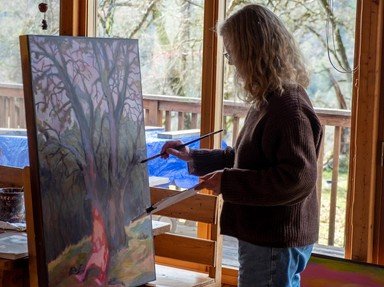Quiz Answer Key and Fun Facts
1. "The Surrender of Breda" (1635) depicts a Spanish victory at the hands of the Genoese-born Ambrogio Spinola. Which forces did the Spanish defeat in the painting, with their leader giving up the city's key?
2. "Las Meninas" (1656), one of the most-studied paintings in the West, shows Infanta Margaret Theresa with her attendants. Also the location of the painting's scene, from which Spanish fortress was the painting rescued during a terrible fire?
3. The "Rokeby Venus" (c. 1647-51) follows a long tradition of painting Venus gazing into a mirror (e.g. Titian and Rubens).
True or false: The perspective of Venus' reflection means that she is staring at herself.
4. The "Portrait of Juan de Pareja" (1650) depicts an enslaved man who was owned by Diego Velazquez.
5. Velazquez had quite a reputation as a portrait painter, though this pope was still hesitant to use his services, mistrusting the painter's fame. Which pope asked for proof of Diego Velazquez's skills before he allowed him to paint this portrait of him?
6. This 1629 painting is a mix of the old and the new as it shows a mythological figure giving relief to the poor of Velazquez's contemporary Spain. The figure does this by offering them wine. Which Velazquez painting is it?
7. Velazquez, ever fond of Caravaggio, used the Italian painter's chiaroscuro contrast of light upon dark in his 1632 painting "Christ Crucified". What other technique, in which a figure puts more weight on one foot than the other, did Velazquez utilize?
8. As a court painter, Diego Velazquez painted many portraits of royalty, including several of the king's daughter Margarita Theresa. These portraits were then sent to Vienna to her future husband, Leopold I, to see what his future wife looked like (even though she was only 8 years old in the painting and he 19). What was Leopold's title?
9. "Old Woman Frying Eggs" (1618) belongs to Velazquez's early works, which often focused on working folks and before he became part of the court of King Philip IV of Spain. As it was his birthplace, from what period of works does this painting belong?
10. In a familiar religious theme, Velazquez's "Coronation of the Virgin" (1644) shows the Virgin Mary being crowned by God the Father on the right, Jesus on the left, and which entity in the center, represented by a glowing dove?
Source: Author
trident
This quiz was reviewed by FunTrivia editor
ponycargirl before going online.
Any errors found in FunTrivia content are routinely corrected through our feedback system.
